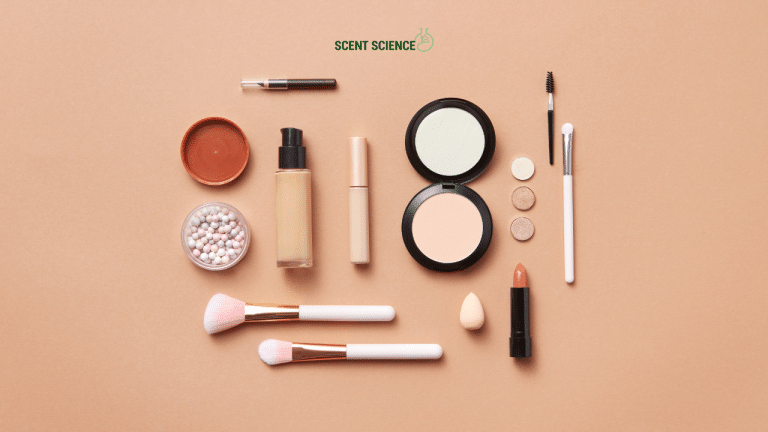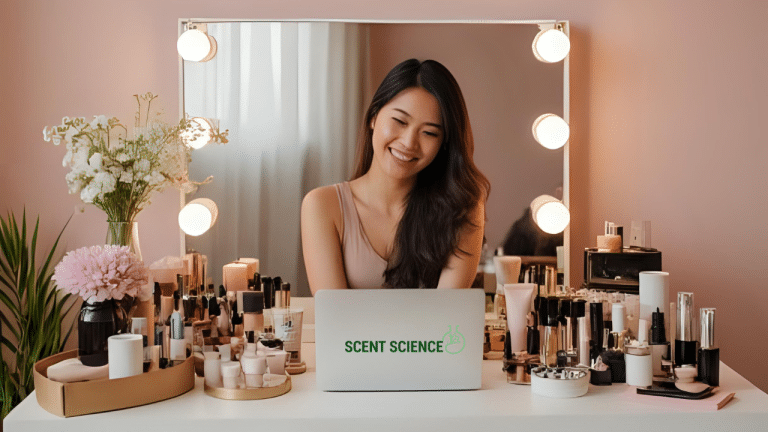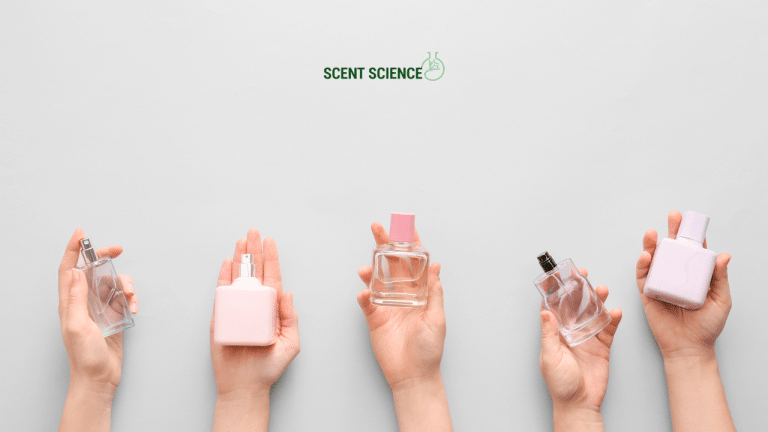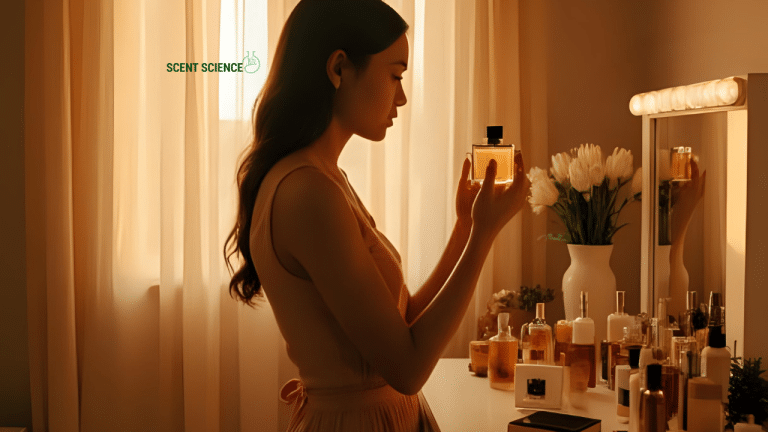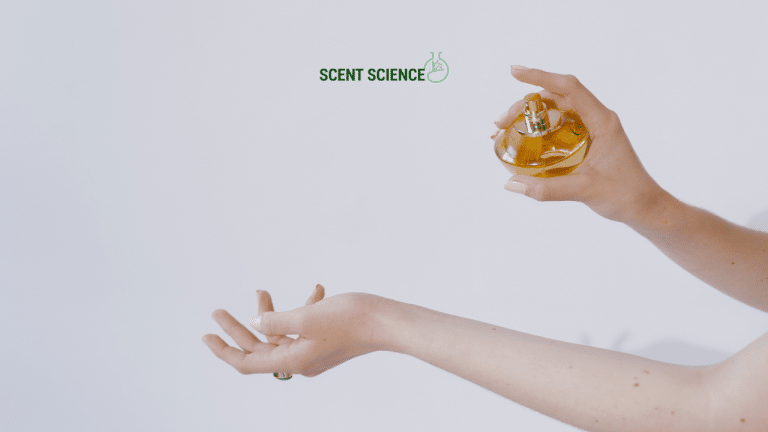Fragrance science, at the intersection of chemistry and psychology, offers profound insights into how scents impact mood, cognitive function, and overall well-being. As a cosmetic chemist and sensory scientist, it is vital to clearly elucidate the molecular mechanisms and psychological frameworks underlying these effects. Recent research has increasingly illuminated the specific roles of individual fragrance compounds, emphasizing the importance of both chemical composition and experiential context.
Table of Contents
ToggleThe Psychological Impact of Fragrances
Fragrances have the ability to evoke strong emotional responses. This phenomenon can largely be attributed to the olfactory system’s direct connection to the brain’s limbic system, which governs emotions and memory. Essential oils such as lavender (Lavandula angustifolia) and citrus-based compounds like limonene have shown consistent anxiolytic (anxiety-reducing) effects. Lavender, for instance, is rich in linalool and linalyl acetate, which modulate the GABAergic system in the brain, producing calming effects.
In contrast, invigorating scents such as peppermint (Mentha piperita) and rosemary (Rosmarinus officinalis) are linked to enhanced cognitive performance and alertness. Research demonstrates that these fragrances can enhance memory retention and increase concentration by stimulating the adrenergic system, boosting norepinephrine levels, resulting in heightened focus and wakefulness.

Hypoallergenic Fragrance Options
For individuals with sensitivities, hypoallergenic fragrance options have gained traction. The term “hypoallergenic” typically refers to products that are less likely to cause allergic reactions. In fragrance compounds, this often means avoiding common allergens such as isoeugenol and oakmoss, and instead using synthetic alternatives that emulate the desired aromatic profile without the reactive properties.
Advances in analytical chemistry and dermatological studies have identified low-reactivity compounds, thus informing safer formulation strategies. For instance, using a synthetic musk such as Galaxolide instead of nitro musks reduces the risk of allergic dermatitis while maintaining the desired musk scent.
The Role of Technology: AI in Fragrance Science

Emerging technologies, particularly artificial intelligence (AI), are revolutionizing fragrance formulation. AI-driven systems can analyze vast datasets of chemical compositions and consumer feedback to predict successful fragrance combinations far quicker and more accurately than traditional methods. These systems enable personalization at an unprecedented scale, tailoring fragrances to individual preferences and needs.
Through machine learning algorithms, AI can predict the olfactory properties of novel compounds based on their molecular structure, thus accelerating the innovation cycle in fragrance development. For example, AI can suggest new combinations by identifying compatible chemical synergies, enhancing a fragrance’s complexity and appeal.
Moreover, wearable technology integrated with fragrance dispensers offers another layer of personalization, adjusting scent intensity and composition in real-time based on biometric feedback and environmental factors.

Conclusion
The convergence of fragrance science, technology, and consumer personalization signifies a transformative era in the beauty and wellness industries. By understanding the intricate relationships between fragrance compounds and their psychological effects, and embracing technological innovations, we can develop tailored solutions that enhance mental and emotional well-being while accommodating individual sensitivities.
In summary, fragrance science not only deepens our understanding of sensory perception but also leverages cutting-edge technologies to meet the evolving needs of consumers worldwide, all grounded in rigorous, evidence-based research.
Frequently Asked Questions
How does scent therapy impact individuals with PTSD?
Scent therapy can significantly impact individuals with PTSD by triggering or alleviating traumatic memories and emotions. Odors are closely linked to memory and emotional responses, and certain smells can evoke distress or relaxation. For example, odors like fuel, blood, gunpowder, and burning hair can trigger traumatic memories and distress in individuals with PTSD[1][3).
Can scent therapy be used as a treatment for PTSD?
Yes, scent therapy can be integrated into treatment plans for PTSD. Adding trauma-related odors to therapies such as virtual reality enhanced exposure therapy has shown promising results. This approach can help patients process traumatic memories more effectively and reduce PTSD symptoms[3]. Additionally, aromatherapy using essential oils like bergamot has been shown to mitigate symptoms of arousal, negative mood, and avoidance behavior in PTSD sufferers[5).
What types of scents are commonly used in scent therapy for PTSD?
In scent therapy for PTSD, both traumatic and calming scents are utilized. Traumatic scents such as fuel, blood, and gunpowder are used in exposure therapies to help patients confront and process their traumatic memories. On the other hand, calming scents like bergamot essential oil are used to reduce anxiety, improve sleep, and enhance positive mood[3][5).
Is scent therapy a standalone treatment or part of a broader therapeutic approach?
Scent therapy is typically part of a broader therapeutic approach rather than a standalone treatment. It is often combined with other therapies such as virtual reality exposure therapy, cognitive-behavioral therapy, or other forms of trauma-focused therapy to enhance treatment outcomes[3][5).
References

